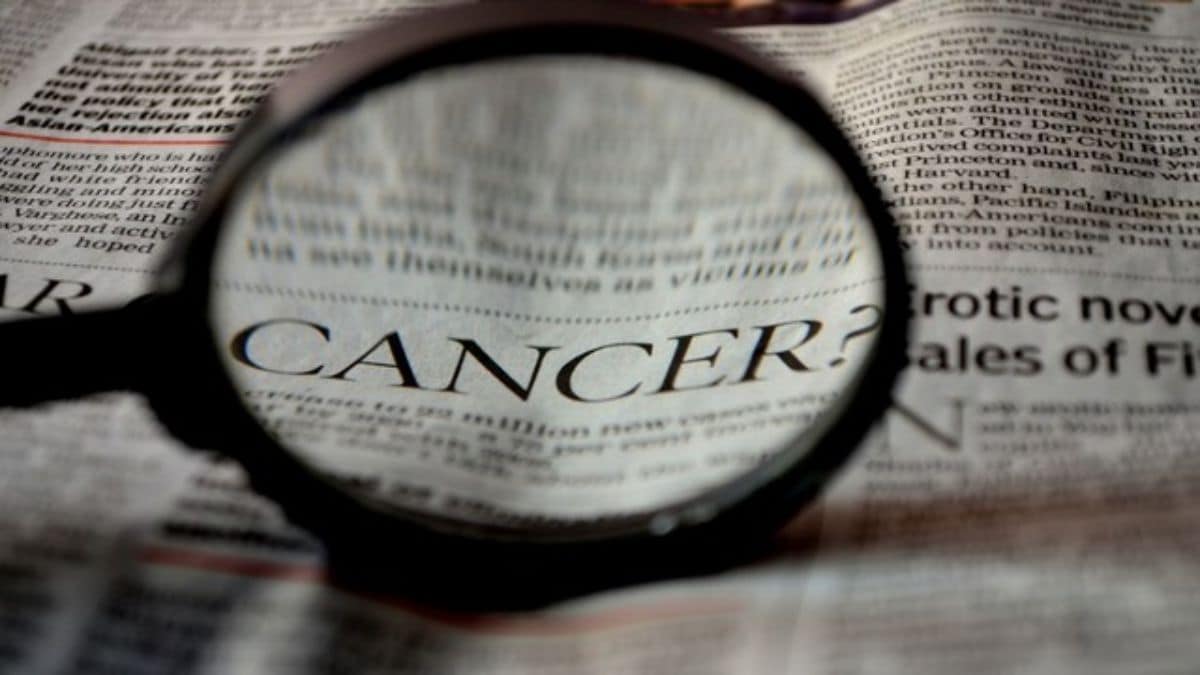Experts call for early detection, lifestyle changes as breast cancer cases surge among younger women

Lifestyle
Experts stressed that raising awareness about cancer is essential for fully leveraging medical advancements. Despite remarkable progress in early detection and treatment, millions continue to succumb to this serious disease.read more
)
The rising incidence of breast cancer is becoming a global health crisis, affecting women at increasingly younger ages. In March 2024, renowned actress Olivia Munn, 43, revealed her battle with aggressive luminal B breast cancer, leading to a double mastectomy. In India, recently Bollywood actress Hina Khan, 36, was diagnosed with stage 3 breast cancer. Experts, alarmed by these trends, emphasize the importance of regular health check-ups and recommend annual mammograms for women over the age of 30 to promote early detection and improve outcomes.
Raising awareness among women about screening at early age is one of the most effective measures that help in combating this menace. Experts said that regular screening can detect a very high number of breast cancer cases at early stage and that would leave ample rooms for oncologists to better deal with breast cancer which is presently the most prevalent cancer among women in India not only in terms of high incidence but also mortality.
Dr Archana Dhawan Bajaj, Gynecologist, Obstetrician and IVF Expert, Nurture IVF Clinic “Raising awareness is crucial for early detection. We advise women to perform monthly breast self-examinations starting at age 20, ideally about five days after their menstrual cycle. For postmenopausal women, this examination can be scheduled for a specific day each month. Given the current trend, we find all women over 20 years should go for an annual breast examination by a trained doctor. Importantly, regular mammograms should now begin at age 30 to facilitate early detection of breast cancer and ensure timely clinical interventions. Previously, annual mammograms were recommended for women over 40.”
According to the ICMR’s National Cancer Registry Programme Report 2020, India is projected to see a 12% increase in cancer cases by 2025. Current trends suggest that the total number of cancer cases could rise to approximately 1.57 million by that year, with breast cancer accounting for an estimated 200,000 cases, or 14.8% of all cases among women.
Dr Anshuman Kumar, Director of Surgical Oncology, Dharamshila Narayana Superspeciality Hospital said “Breast cancer, once largely associated with metro cities, is now alarmingly common in rural areas, with cases being reported even in young, unmarried females as young as 18, often at stage 4. The rise in early-age breast cancer can be attributed to multiple factors, including modern lifestyle choices and dietary habits. Processed and ultra-processed foods, especially when consumed warm in plastic containers, release harmful chemicals like phthalates and bisphenol A (BPA), which are known to disrupt hormonal balance and contribute to cancer risk. Irregular eating habits and exposure to food adulterants, insecticides, and heavy metals further exacerbate the situation”.
“A significant link has also been found between night-shift work and increased breast cancer risk, as per studies like the Nurses’ Health Study, particularly when combined with consumption of food heated in plastic. Environmental pollution only adds to the growing number of cases. One of the most critical gaps, however, lies in the lack of early detection and screening, which is not yet mandatory in India. This means many women, especially in rural areas, remain unaware of the importance of regular mammograms, clinical breast exams, and breast self-examinations. Increased awareness, coupled with government-led initiatives for mandatory screening, is crucial to curbing this alarming rise in breast cancer cases.” added Dr Kumar.
Dr Amit Upadhyay, Senior Consultant – Oncology and Hemato-Oncology, PSRI Hospital “Common symptoms of breast cancer include a lump in the breast, bloody or straw-colored discharge from the nipple, recent inversion of the nipple, ulceration or deterioration of the nipple, skin dimpling, and thickening of the skin that resembles the texture of an orange peel.”
” After the mammogram, we proceed with a needle biopsy to confirm that it is indeed a breast cancer case. This is not a complex procedure and can be done with 10-15 minutes. Along with MRI or ultrasound, for patients with larger lumps, swollen glands in the armpit, or signs that may indicate the disease has spread to distant organs—such as bone pain, difficulty breathing, or an enlarged liver—further evaluation with a PET-CT scan may be necessary,” added Dr Upadhyay.
Dr. Arun Kumar Giri, Director – Surgical Oncology, Aakash Healthcare pointed out, “We are seeing a troubling trend, with many patients arriving at our facilities with advanced stages of breast cancer. For those diagnosed in the early stages (I and II), surgery is usually the primary treatment option. However, in cases classified as locally advanced (stage III), chemotherapy is often administered first, followed by surgery and radiation.”
“Advance-stage breast cancer, particularly when it has metastasized to different organs, poses a significant challenge to us as it complicates treatment strategies. Interventions require a comprehensive approach to address not only the primary cancer but also the secondary sites. Symptom-directed interventions become necessary, including surgery for ulcerated breast masses, radiation therapy for pain relief or bone-related issues, and effective pain management strategies. The focus now shifts to controlling the disease, alleviating symptoms, and improving the patient’s quality of life,” added Dr. Giri.
Advancements in imaging technology and radiation therapy have significantly enhanced the treatment of breast cancer, leading to improved dose homogeneity and conformity. These modern techniques also reduce radiation exposure to surrounding organs, marking a notable improvement over older method.
Dr. Puneet Gupta, Chairman of oncology at Asian Hospital, explained, “Chemotherapy generally consists of 6-8 cycles administered in a daycare environment, with each cycle spaced 15-21 days apart. Hormone therapy, which is typically taken in tablet form, usually lasts for five years or longer. In some cases, patients may need targeted therapy, which is usually administered for approximately one year. This specialized treatment is designed to enhance its effectiveness and provide a more personalized approach to care.”
Experts stressed that raising awareness about cancer is essential for fully leveraging medical advancements. Despite remarkable progress in early detection and treatment, millions continue to succumb to this serious disease. By educating the public about these innovations and the critical role of early intervention, we can save countless lives and provide hope for improved outcomes in the ongoing battle against cancer.
Anticancer medicines are of five types (immunotherapy, Hormonal therapy, target therapy, biological therapy and above all chemotherapy). Hormonal therapy is best and cheapest for Hormonal positive (ER positive; PR positive) cancer breast. Even simple removal of both ovaries in young still menstruating women is effective.
Hormonal therapy needs to be taken for a few years. However, the use of Chemotherapy remains integrated in more than one way with or without breast surgery in locally advanced or metastatic or recurrent breast cancer. The latest kid on the block is Antibody-drug conjugate (a type of combo chemo target drug) which is the only option for LOW POSITIVE HER 1+, HER 2+ ISH positive cancer breast types.
Immunotherapy has emerged as an important armamentarium in the fight against TRIPLE NEGATIVE breast cancer whereas target drugs like TRASTUZUMAB are vital for TRIPLE POSITIVE HER 3+ positive cancer.
Discover more from Tamfis Nigeria Lmited
Subscribe to get the latest posts sent to your email.



 Hot Deals
Hot Deals Shopfinish
Shopfinish Shop
Shop Appliances
Appliances Babies & Kids
Babies & Kids Best Selling
Best Selling Books
Books Consumer Electronics
Consumer Electronics Furniture
Furniture Home & Kitchen
Home & Kitchen Jewelry
Jewelry Luxury & Beauty
Luxury & Beauty Shoes
Shoes Training & Certifications
Training & Certifications Wears & Clothings
Wears & Clothings
















